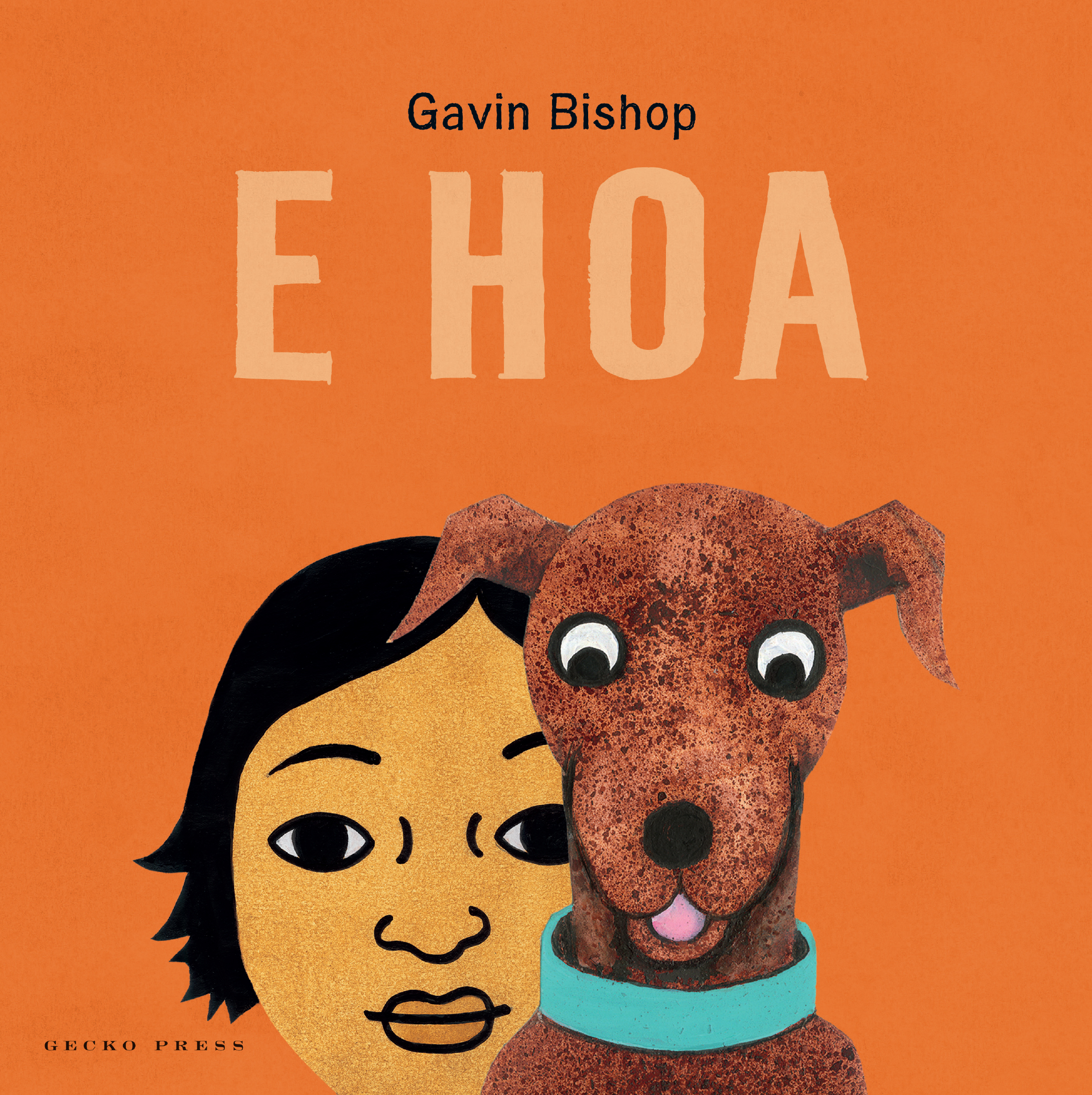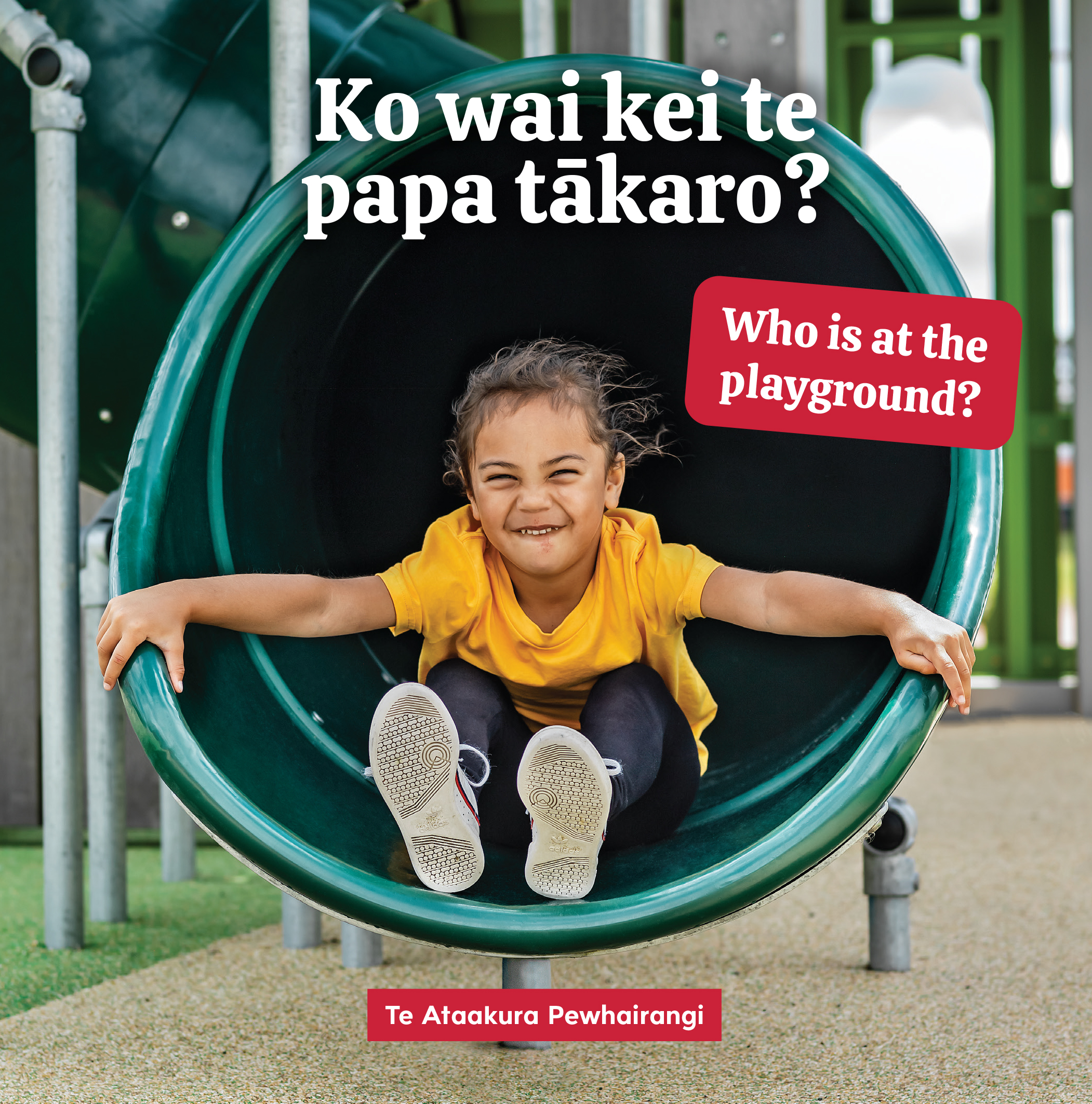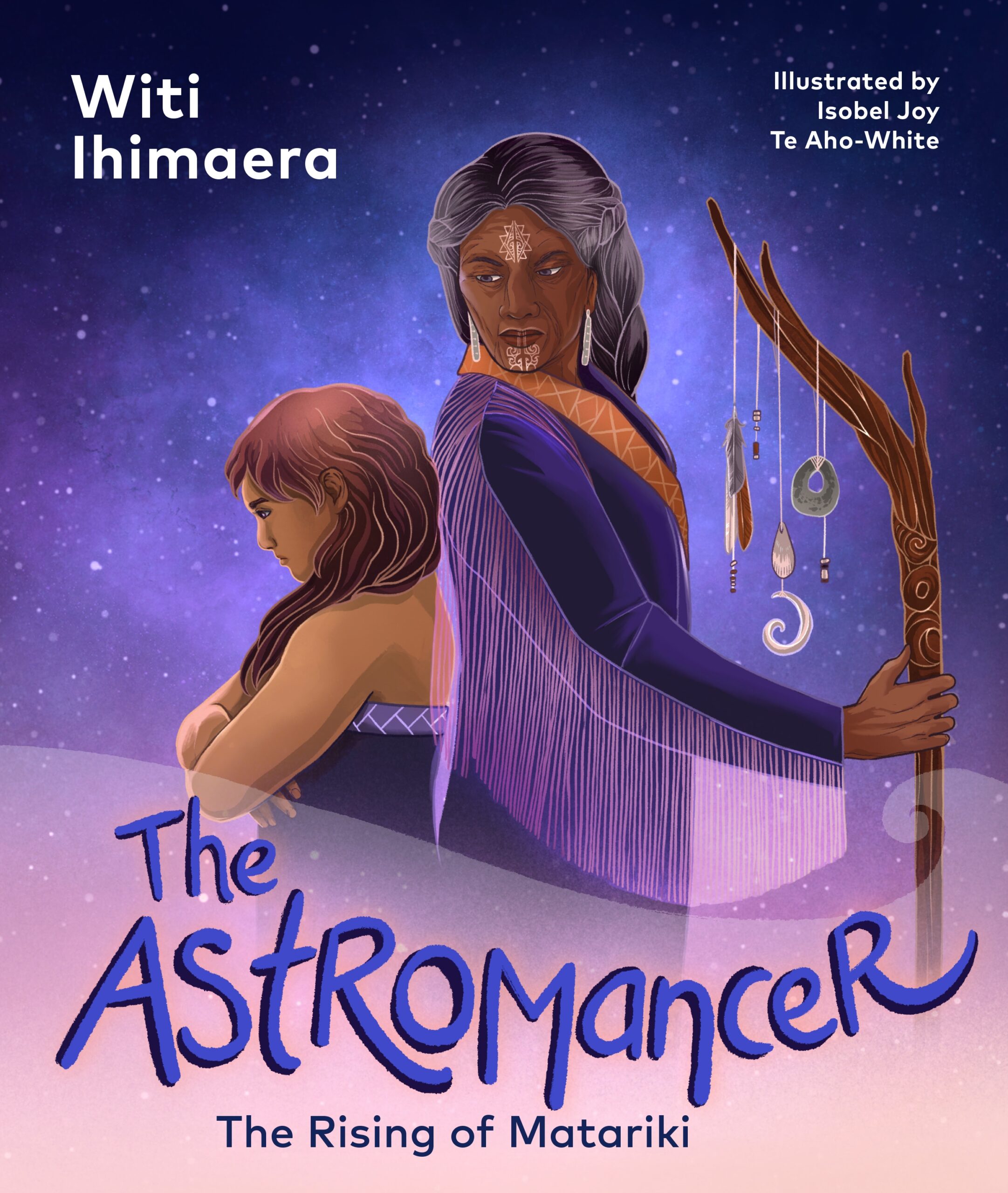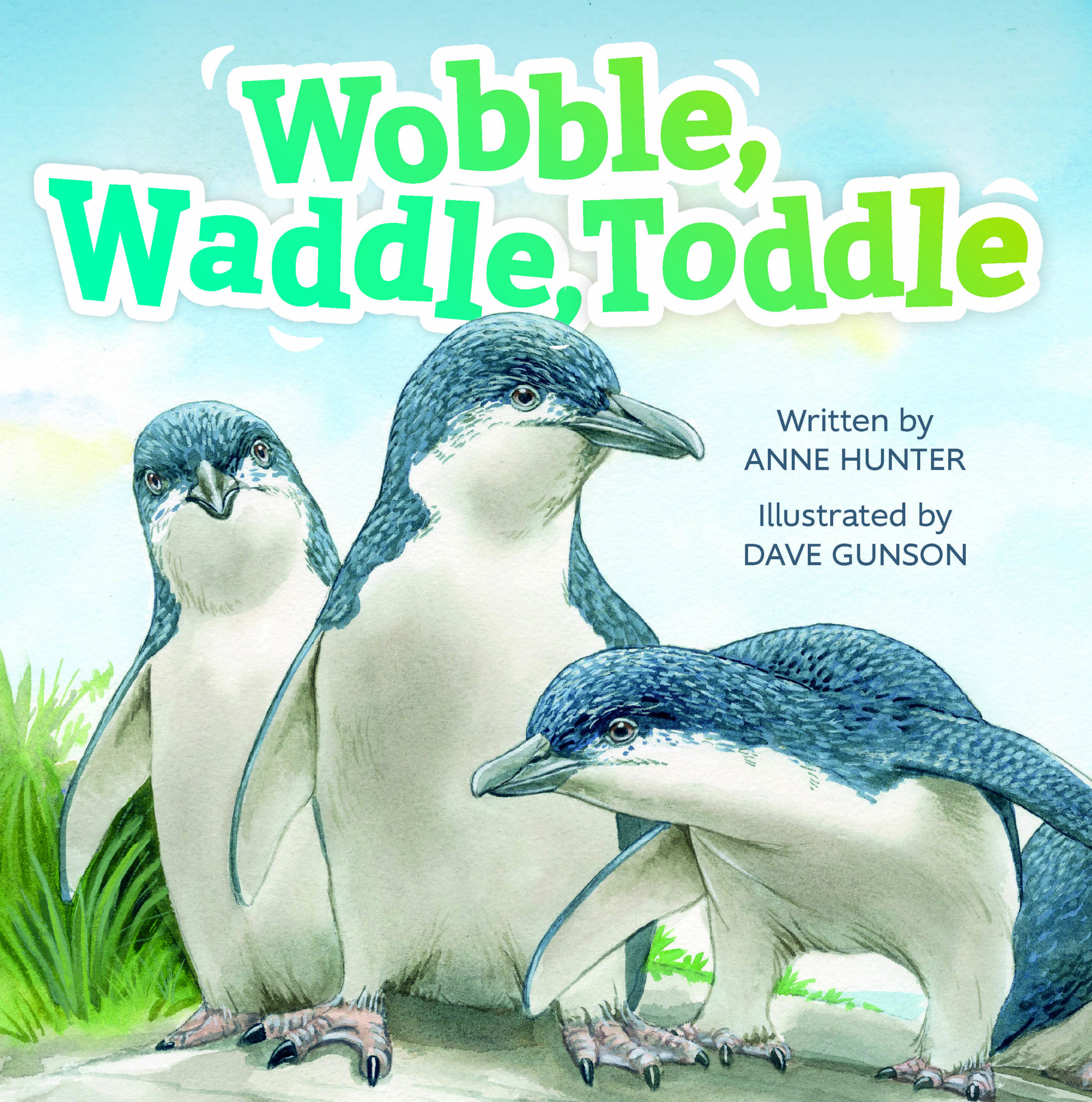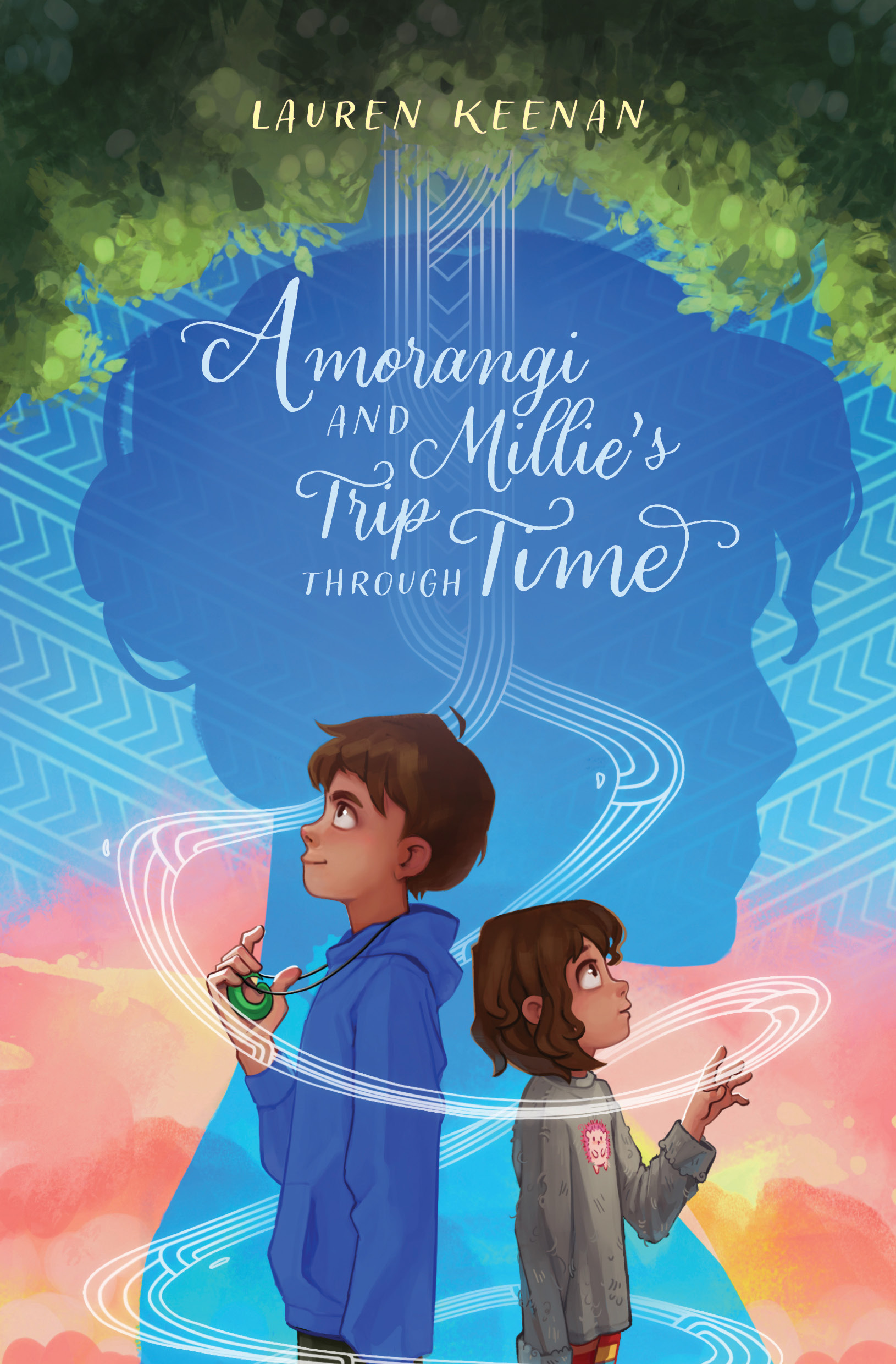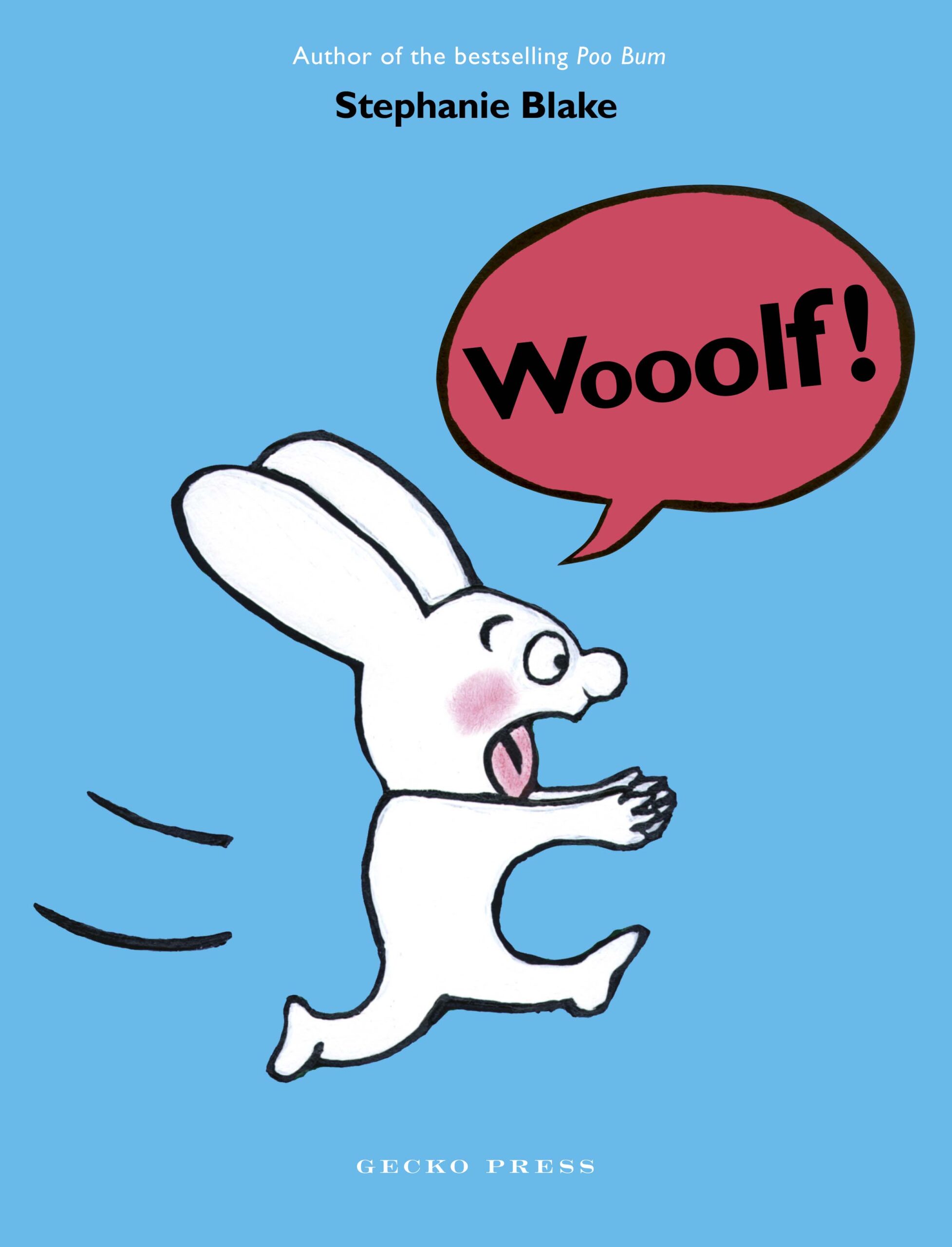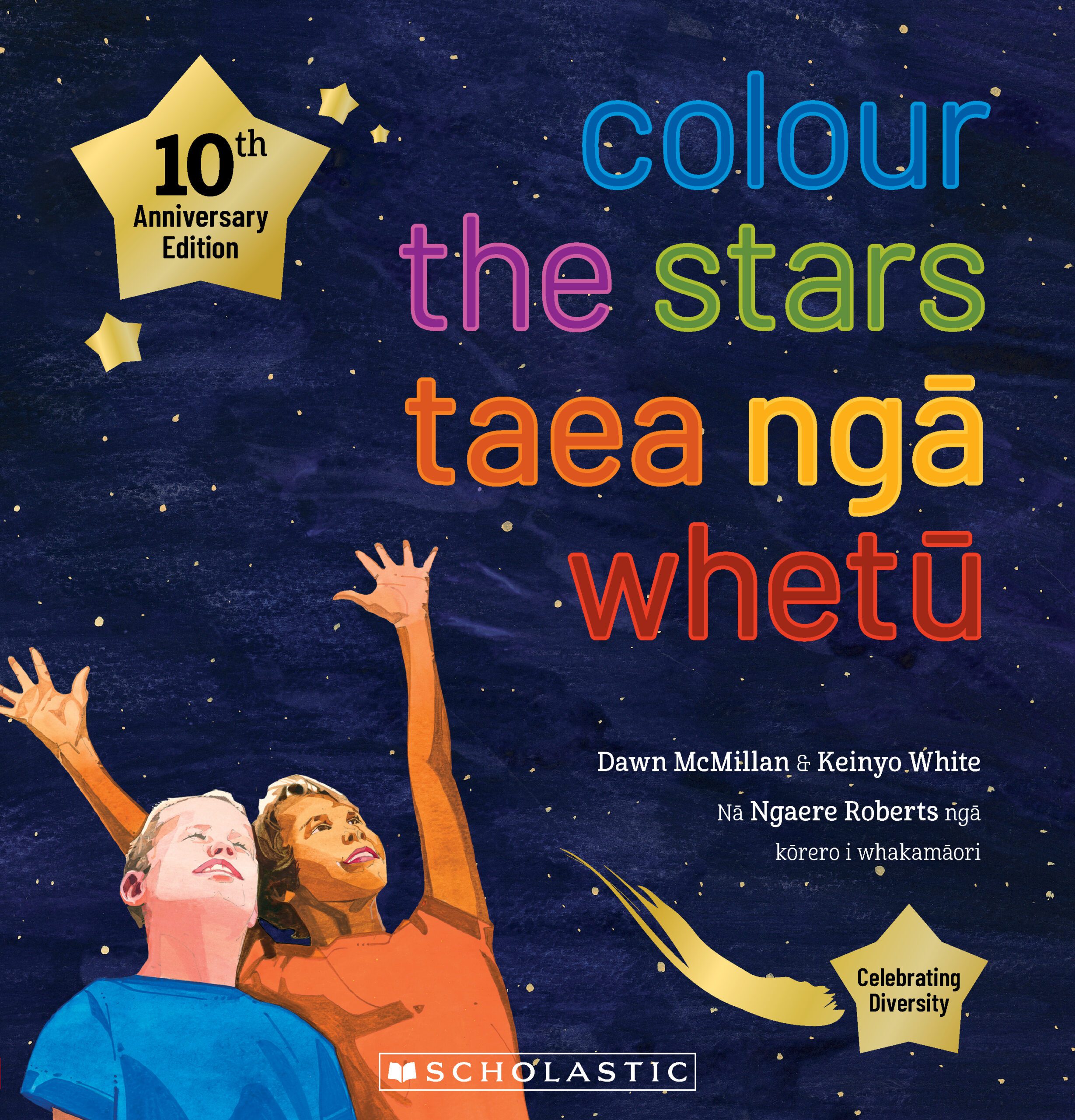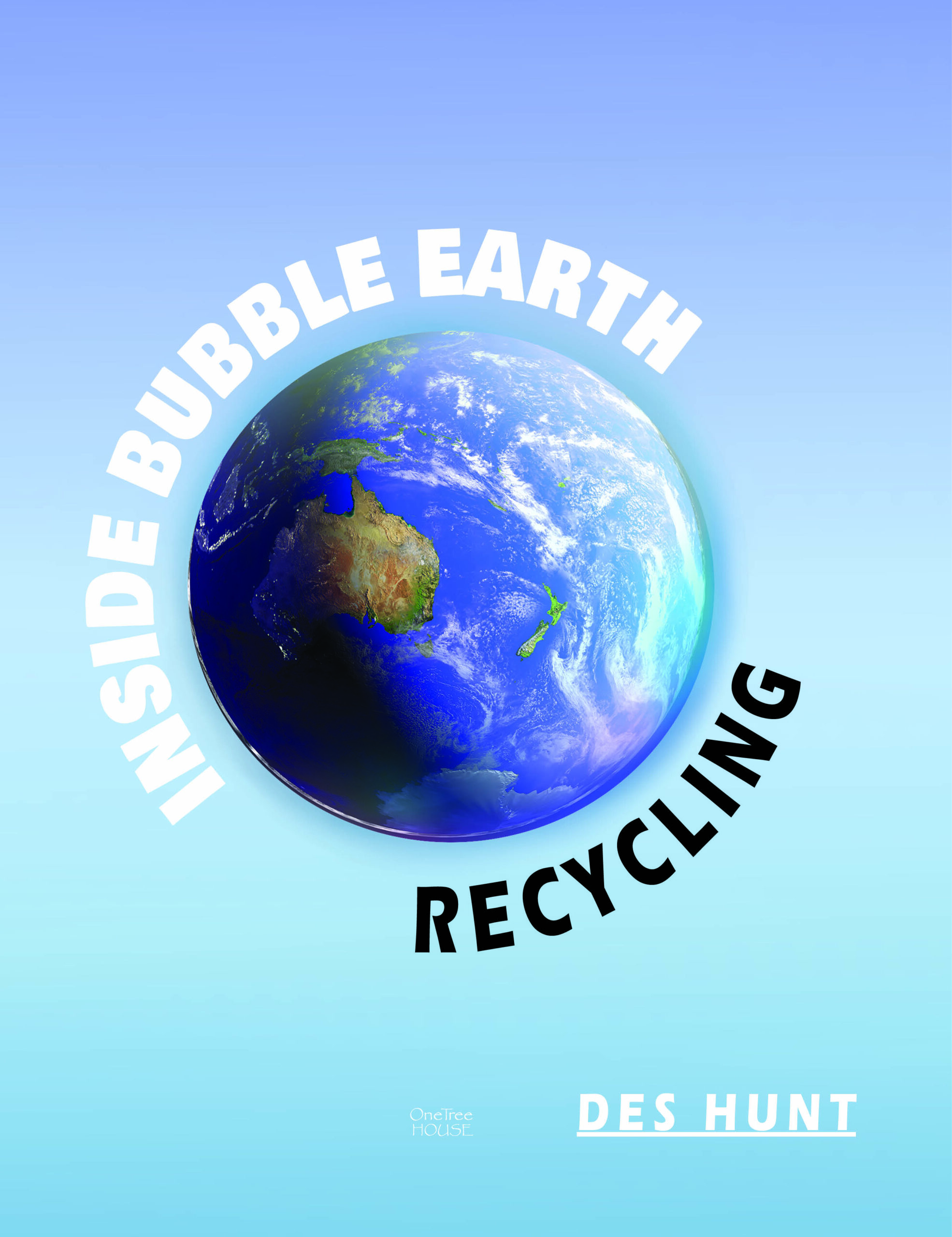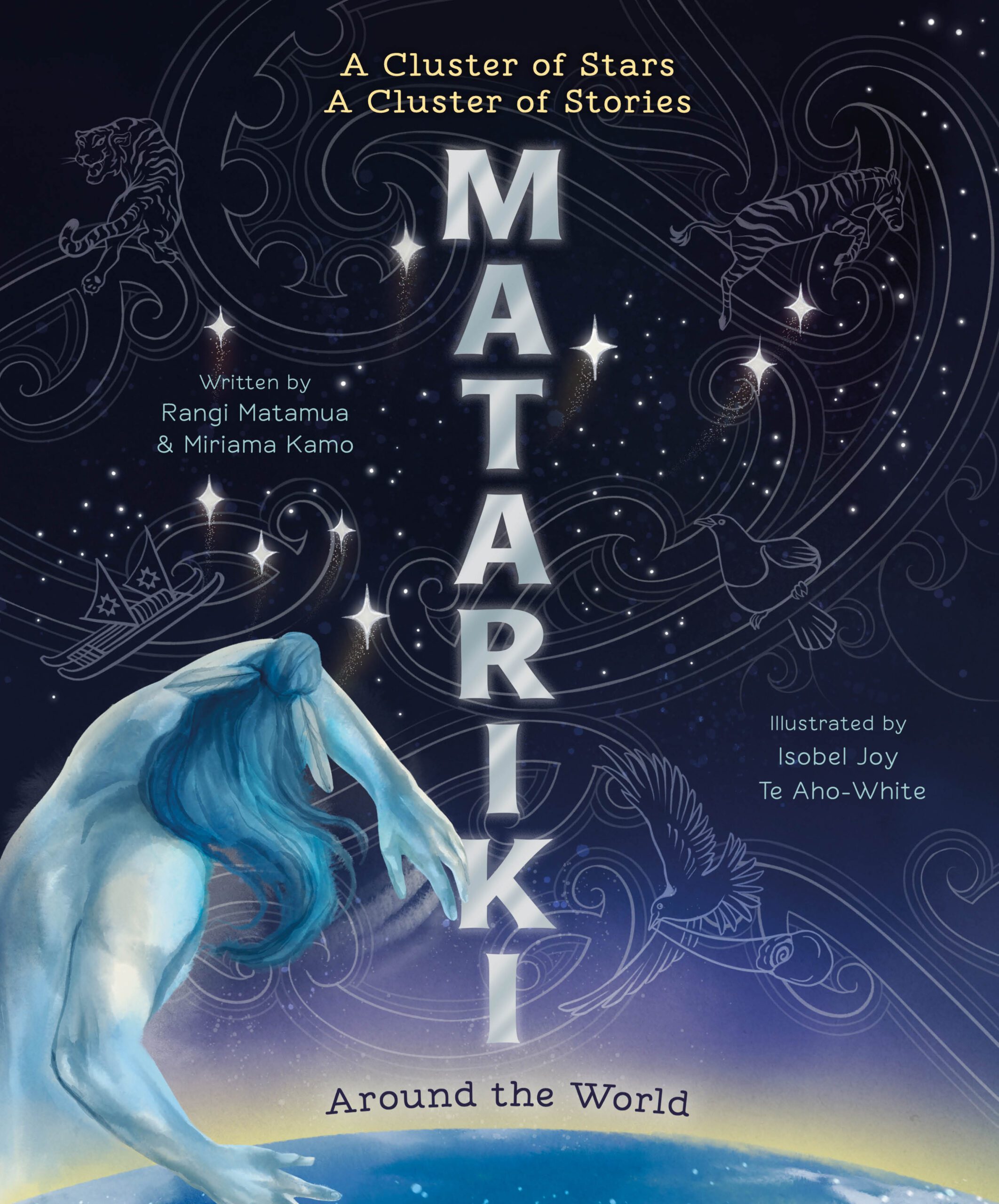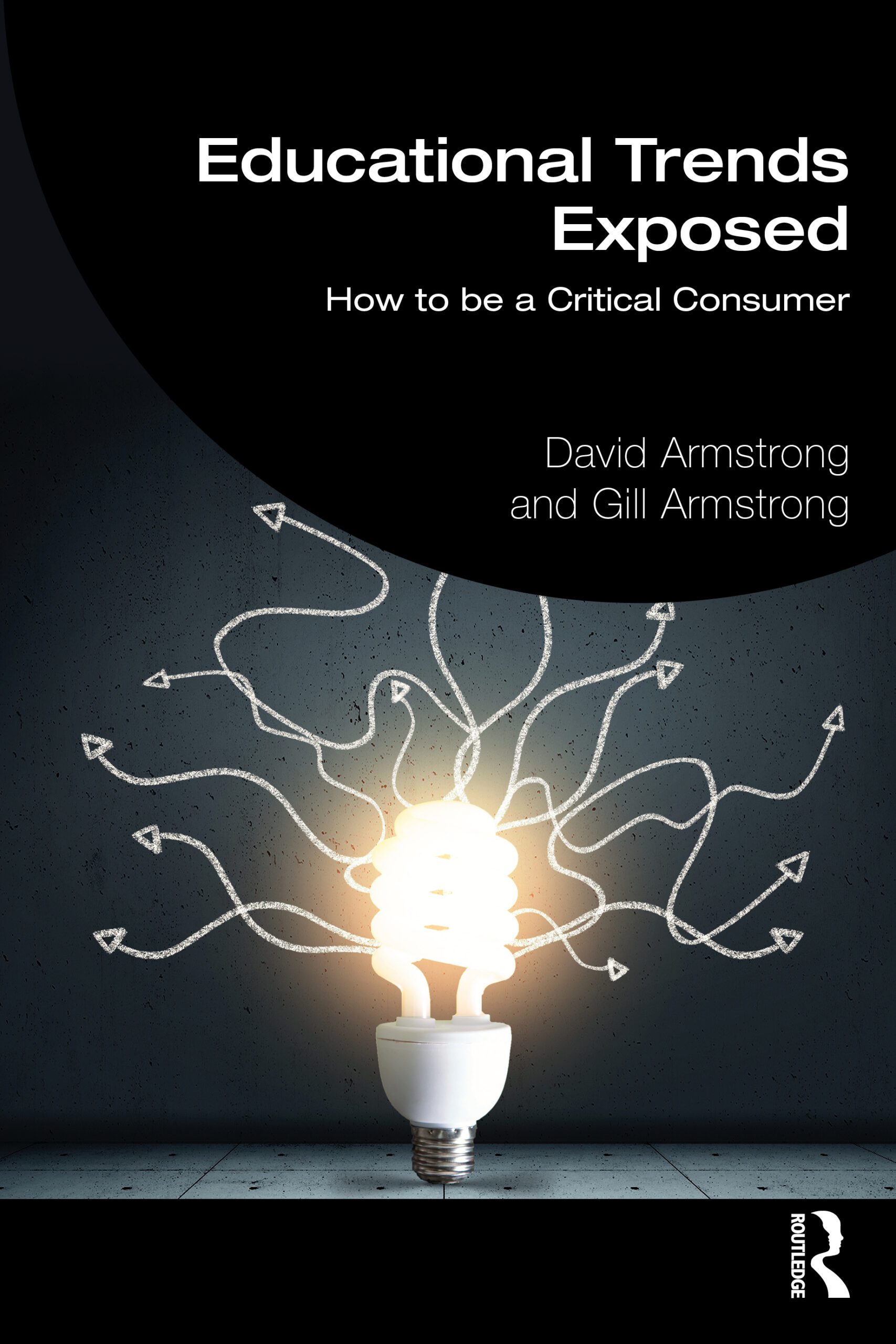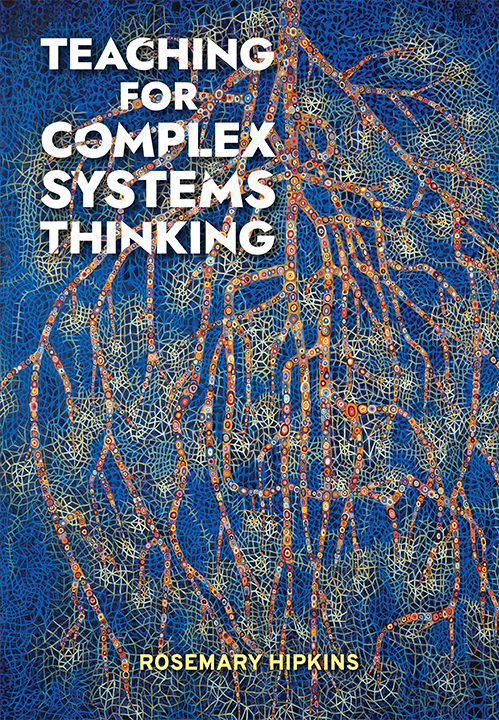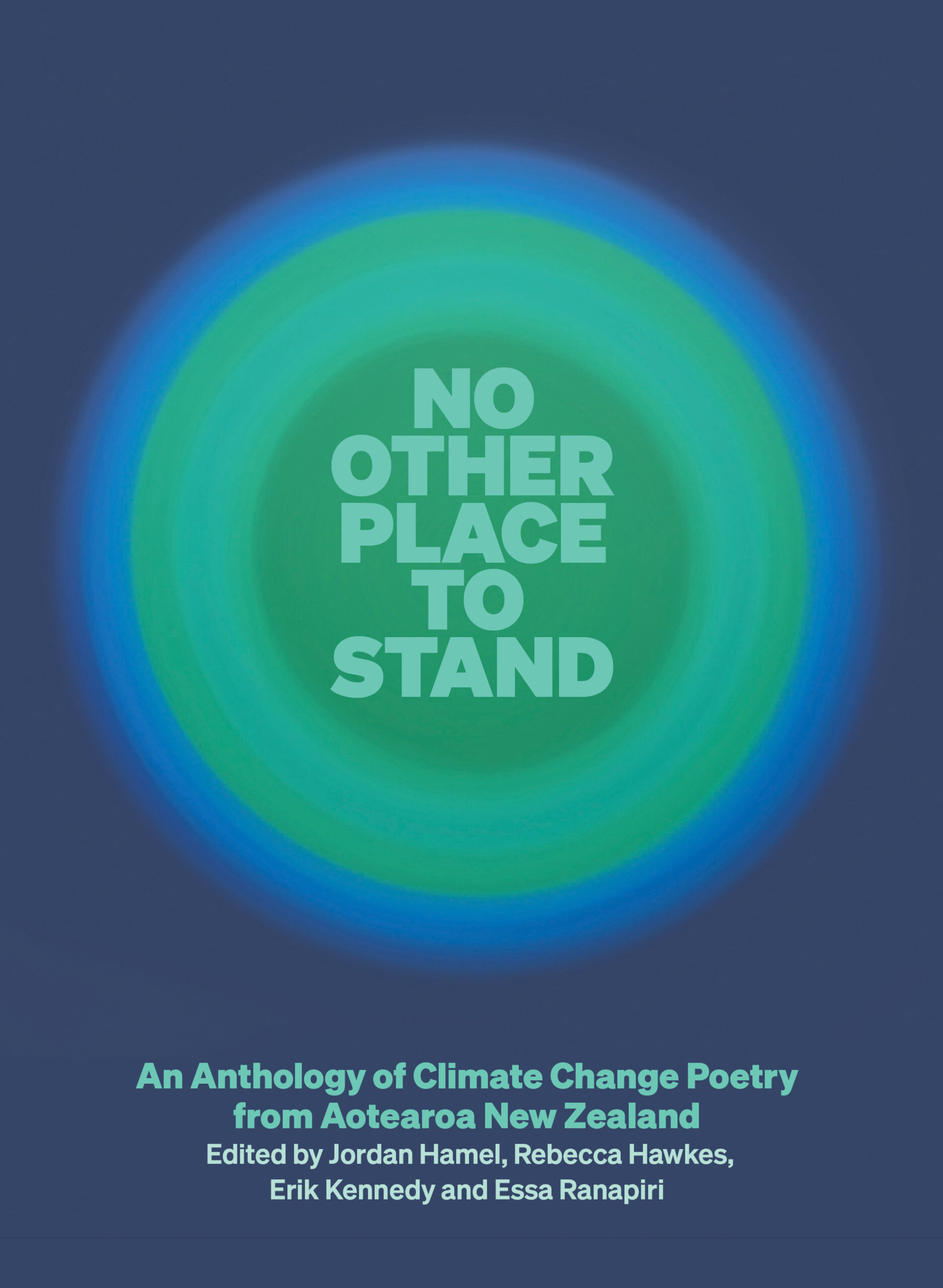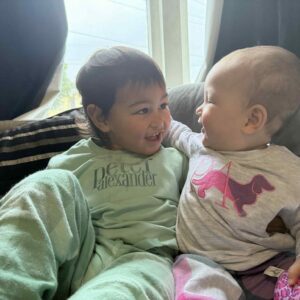E Hoa
Gavin Bishop (Gecko Press)
This book is adorable – eye catching and bright colours on each page keep your eyes keen, and the illustration style is beautiful and simple. The dog is animated and expressive and gives perfect cues to the te reo text describing his feelings. A cute, engaging read for any little people and their parents wanting to learn how to describe feelings in reo. – Ella Hughes
Ko wai kei te papa tākaro? Who is at the playground?
Te Ataakura Pewhairangi (Massey University Press)
Following on from Kei te aha ngā kararehe? What are the animals doing?
Te Ataakura Pewhairangi’s latest bilingual board book is all about visiting a place very familiar to tamariki and their whānau – the playground. Vibrant photographs of a modern playground are combined with a question and answer format, encouraging tamariki and their caregivers to kōrero. The rāranga kupu/word list and reo āwhina/language tips at the end of the book are a great additional resource. – Sarah Silver
The Astromancer: The Rising of Matariki
Witi Ihimaera and Isobel Joy Te Aho-White (Puffin)
The Astromancer is a shocking story because there are things happening everywhere in the background, just everywhere. But the most shocking part of all is when Ruatapu comes to raid the village.
The story is set on a vast mountain and when you were at the top you could see everything. When you looked down you could see the huge village and rocky parts of the islands. And when you looked up at night you could see the stars shining so close it looked like you could jump into outer space. The main characters are Te Kōkōrangi, Ariā and her smelly dog Kurī.
I liked the book because it told me about what Māori people used to do and all of the different constellations they used to guide them. The book made me feel happy. The happy part was when the Astromancer, Te Kōkōrangi, got along with Ariā, the girl. I felt a bit scared when Ruatapu came.
I would recommend the book to my friends and family so that they can hear the amazing story. – Huxley, age 6
Wobble, Waddle, Toddle
Anne Hunter, Dave Gunson (Bateman Books)
From little blues to emperor penguins and from kōura rangi (krill) to wheke (colossal squid) this book introduces children to creatures that live in the ocean and islands south of Aotearoa. The rhyming verse is informative and funny, making it great to read aloud. And information lovers will appreciate the realistic illustrations and fascinating facts at the end of the book. – Sarah Silver
Amorangi and Millie’s Trip Through Time
Lauren Keenan (Huia)
This story is a beautiful exploration of the history of Aotearoa through two children’s whānau and whakapapa. As Amorangi and Millie travel back in the past on a mission to save their mum, they meet their tīpuna and see the different phases of colonisation that their ancestors experienced. Like the author Lauren Keenen, Amorangi and Millie are Te Ātiawa, and they witness changes to their whenua through the invasion of Parihaka, native bush being cleared for farming and then sold to build housing.
This book will be a great resource for teachers seeking creative ways to bring the new histories curriculum into their classroom and explore Aotearoa’s history in an accessible way for tauiwi and Māori children. It could also be a book for families to read together and explore their own whakapapa. It’s both a story to be read aloud and discussed, and for keen young readers to dive into and be captured by the adventure. – Erica Finnie
Wooolf!
Stephanie Blake, translated by Linda Burgess (Gecko Press)
“Once there was a little rabbit who only did what he wanted…” In this hilarious take on the story of The Boy Who Cried Wolf it’s easy to guess what one cheeky rabbit says to get out of doing things he doesn’t want to do. But when a real wolf comes along it’s not such a fun game for the little rabbit after all. A book for toddlers who are always trying to outsmart their parents, and vice versa. – Sarah Silver
Colour the Stars/Taea ngā Whetū
Dawn McMillan and Keinyo White (Scholastic)
Colour the Stars is a touching story of children’s innocence and kindness. Luke does not know what people mean when they talk about the different colours. He does not think that he needs colour anyway. His world is colourless.
But Luke’s friend Isaac passionately shares the delights that colour bring to the world. He gifts the colours with feelings and the joyous emotions they bring. Each colour is cleverly brought to life, using the senses of smell, feeling and taste. The richness of each colour is represented by the natural elements in our world.
This is a story of friendship, and the childhood innocence of ‘seeing’ the world through the eyes of our ākonga/mokopuna. Luke is blind. His friend Isaac cleverly shares his understanding of colour with his friend, so his friend Luke can also enjoy the delights colour bring. The boys have a shared understanding of their world.
A very small portion of children in Aotearoa New Zealand view their world with no colour. Teaching the concept of colour without ‘seeing it’ is a challenge. This book navigates the subject perfectly, bringing great joy and life to the world of colour, through the other senses.
This resource shared in a classroom provides a platform for opportunities for open conversations about challenges, differences and understanding of others. It also exemplifies friendship at its purest level. To celebrate the 10-year anniversary of this book, Scholastic have created a bilingual edition, combining Colour the Stars and Taea ngā Whetū texts into one volume. – Christine Toy
Inside Bubble Earth: Recycling
Des Hunt (OneTree House)
In this book, Inside Bubble Earth: Recycling, Des Hunt explores what recycling means for different materials, and how our recycling systems have evolved. The material covered in the book, although presented in an engaging way, is dense. For example, it explains different methods of recycling such as chemical conversation and incarceration.
The book also provides a historical overview of changes to materials that humans have used, from stone to plastics, as well as looking to the current challenges we face with micro and nano plastics.
It finishes by looking to the future and encouraging readers to become more conscious of what they consume, including the materials that are used and what happens to them at the end of their life. The book finishes with a simple message that although the ‘3 R’s’ (reduce, recycle, reuse) are important, we have to ‘rethink’ how we do things, so that we can live a more sustainable life.
This book would be suitable for senior primary- and intermediate-aged students, or as a resource book to accompany teaching on sustainability and consumerism. – Isabella Lenihan-Ikin
Ngā Rongoā a Nanny Mihi – Nanny Mihi’s Medicine
Melanie Drewery, Suzanne Simpson, Kanapu Rangitauira (Oratia)
He aha te rongoā Māori? He pūrakau tēnei e hāngai ana ki te mahi rongoā me ōna tikanga. Kua tae mai ngā mokopuna a Nanny Mihi, engari kua tae mai he raruraru anō pea? Ka haere rātou ki hea? Ki te tākuta? E kāo! Ka haere kē atu ki te ngahere kohi rongoā ai. He tauira pai o te rere o te mātauranga māori I ngā kaumatua ki ngā mokopuna, he rauemi tika mō tātou katoa, Tamariki mā, Mātua mā kia mārama ai ki te mahi rongoā.
What is ngā rongoā? Find out in this bilingual picture book all about the work and protocols involved in gathering and using Māori medicine. Nanny Mihi’s grandchildren have arrived, but has something else arrived with them? Where should they go? To the doctors? No way! They choose to go the forest instead. Not only is this book a great resource for children and adults to understand some of the work involved in Māori medicine, it also shows how traditional Māori knowledge is transferred between grandparent and grandchild. – Trey Strickland (Taranaki, Te Ātiawa, Ngātiwai ki Aotea, Ngāti Rehua)
Matariki Around the World: A Cluster of Stars, A Cluster of
Stories Rangi Mātāmua, Miriama Kamo, and Isobel Joy Te Aho-White (Scholastic)
He matapihi tēnei pukapuka ki te āhuatanga rerekē o Matariki, ahakoa he reo Pakehā, he reo tūturu ki te kōrero nā Ahorangi Rangi Mātāmua, he tohunga kōkōrangi, he matatau ki te tikanga o ngā whetū me te marama, nō reira he wairua Māori ki rō hēnei kupu.
Ehara a Matariki nō te iwi Māori anahe, ko tēnei pukapuka he tauira pai o ngā hononga ki ngā iwi taketake o te ao, kei Te Moana nui a Kiwa he kōrero, kei Haina he kōrero, kei Hapani he kōrero, engari ko te mea nui nei ka whakanuia hēnei whetū e te katoa.
Ka rapua te kōrero katoa e hēnei whakaahua ātaahua rirerire. Nā tēnei toi i tuia ai te āhua o ngā whetū me āna mahi i hōku whakaaro.
Nō reira taku whakapi nei, ko tēnei te pukupuka tika kia ako ai te kōrero māori e hangai ana ki te kāhui whetū o Matariki, ahakoa ko wai, ahakoa nō hea.
This book is a window to the various aspects of Matariki. Although written
in English, it is true to the teachings of Professor Rangi Mātāmua – an astronomer and expert when it comes to the stars and the moon, so these words have a Māori perspective within.
Matariki does not belong to us as Māori only. This book is a good example of our connections to other indigenous peoples around the world; the Pacific has its own stories, China has its story, Japan has its story, but the main thing is that we all celebrate the stars.
The stunningly beautiful imagery completely captures the stories. The art weaves together the likeness of the stars and what their jobs are.
No matter who you are and no matter where you are from this is the right book to learn of our Māori view in relation to the Matariki cluster. – Trey Strickland (Taranaki, Te Ātiawa, Ngātiwai ki Aotea, Ngāti Rehua)
Educational Trends Exposed
David Armstrong and Gill Armstrong (Routledge)
Brain Gym, High Impact Teaching and Growth Mindset are just some of the educational trends that have emerged within the education sector over the past two decades. These programmes, and many more that are on offer, form part of a billion-dollar global industry.
These trends have influenced education systems around the world and have been a major factor in the change fatigue teachers have reported experiencing over the last couple of years. The question is: are these trends helping our tamariki to achieve? Or are they bought by governments and sold to schools as ‘silver bullets’ to improve outcomes for tamariki and to make up for the lack of resourcing that is put into education?
The authors of this book have done a deep dive into some of the major trends that are prevalent in schools today. They have used this information to create a process-led tool and a traffic light system to help school leaders and stakeholders in the education sector to “become critical consumers of the current educational trends.”
Although it is written for an Australian audience, many of these trends have made it to Aotearoa New Zealand shores. This would be a useful read for teachers and school leaders, as the book offers an unbiased insight into the history and research of these trends. They also provide recommendations as to whether a trend has been properly evidenced, whether to approach the trend with caution or to watch out as there is limited research or evidence into whether tamariki would benefit from the programme on offer. – Tracy Davies
Teaching for Complex Systems Thinking
Rosemary Hipkins (NZCER)
Complexity shouldn’t be something that people should be afraid of – but it does require using the appropriate tools to explore and sense the components and dynamics of complex systems. This book seeks to explain and describe complex systems for educators and provides well-researched examples from other educators to facilitate understanding.
The structure of this book is as appropriately nuanced and complex as the systems it discusses. The complexity is not at all about readability, rather it is very reflective with the author being clear that they are themselves on a journey to appreciate complexity within education. The author has added discussion questions at the end of each chapter for readers wishing to reflect on the content.
I’d recommend this book for those in educational leadership positions, or embarking on postgraduate study where you are using strategies to engage with uncertain information. I found it very relevant when considering challenges facing schools, such as responding to changing information around COVID-19 and considering the systems impacting on education. – Emma Rutherford
No Other Place To Stand: An Anthology of Climate Change Poetry from Aotearoa New Zealand
Edited by Jordan Hamel, Rebecca Hawkes, Erik Kennedy and Essa Ranapiri (Auckland University Press)
It only takes a few daily clicks around the major news platforms to know that the spectre of climate change is undeniably and terrifyingly here.
How shall we save this land
for our children?
writes Rangi Faith, asking the crucial question in the poem which opens this collection.
Ninety-one contributors, half of whom are Indigenous writers, and a good proportion of whom are under 30, are, in the words of the editors, “eulogists and visionaries, warriors and worriers … they’re ordinary people prepared to sit and stare at a blank page, trying to do something with the bloody big troubles looming over our past, present and future.”
A poem may not be “a binding policy or a strategic investment”, but these poems speak to both the head and heart, and, in doing so, add to the imperative and interwoven conversations about climate change, ecology, justice and colonisation.
They confront, as in ‘Burn’, written by nine-year-old Roman Parrott, taking on the persona of fire:
I will not be put out.
They shock, as in Meagan France’s ‘extinction’:
fact / my son is 12 / and he knows his shit too / about what he’s set to inherit / fact / the look on his face when he realised / crushed / eyes cracked / under the weight / of how the earth might turn / of what tomorrow might do / burnfloodstarve
They cry out, as in Anahera Gildea’s ‘Shift’:
Sometimes there is nothing
that can shift the dark
black sadness that sticks like tar
inside my chest so that
when I think of drowning
it’s not in water,
it’s in the thick
swollen veins of Papatūānuku
Can poetry change the world? The editors of this wonderful collection invite us, the readers, to not only engage with the devastation of climate change, but to hear voices of resistance and, importantly, voices of hope.
Thank you, Kahu Kutia, for your powerful epilogue: E kore au e ngaro / I shall not be lost.
Read the poems, share them in your classrooms and with your whānau … and take up the clarion calls. – Janice Jones

